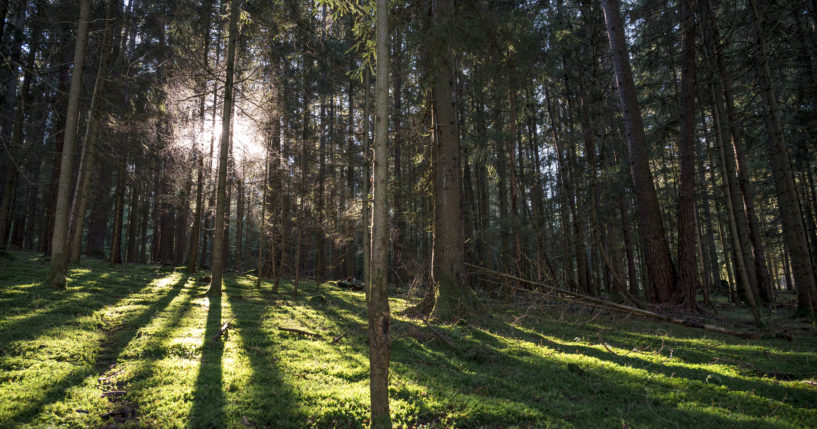
Why We Should Make Extra Effort To Protect Trees

Around half of the trees planted in tropical and sub-tropical reforestation efforts do not survive more than five years, reveals a new study.
Researchers analyzed tree survival and growth data from 176 restoration sites in tropical and sub-tropical Asia, where natural forests have suffered greatly from deforestation.

They found that on average 18 per cent of planted saplings died within the first year. This number rose to 44 per cent after five years. About 15 per cent of the world’s tropical forests are found in Southeast Asia, and they are amongst the most carbon-dense and species-rich in the world, providing habitats for tigers, primates and elephants.
However, in recent decades, large chunks of the region’s trees have been lost due to deforestation. The forest cover has decreased by an estimated 32 million hectares between 1990 and 2010.
Forest restoration is a powerful tool to tackle biodiversity loss and climate change. However, there was some good news. The survival rate of these newly planted trees did vary greatly amongst sites and species, with some areas seeing relatively positive results. In some sites over 80 percent of new trees were still alive after five years yet in other areas, a similar percentage died before their fifth year.

The research, published in the journal Philosophical Transactions of the Royal Society B: Biological Sciences, reveals that this kind of restoration is a good solution in some areas but not in others. The team also found that when an area had been fully deforested, reforestation efforts were less successful than in areas where some trees remained. Areas where there were still some mature trees had roughly a 20 percent higher chance of survival. In more disturbed areas, much fewer survived, showing that more intensive measures for protection and maintenance may be needed in these specific spots.
Co-lead author Dr. Lindsay Banin, statistical ecologist at the UK Centre for Ecology & Hydrology, said: “The large variability in survival we found across sites could be for a number of reasons, including planting densities, the choice of species, the site conditions, extreme weather events or differences in management and maintenance. Local socio-economic factors may also be important.”
He further added, “What’s clear is that success is very site-dependent – we need to understand what works and why and share that information, so we can bring all sites up to the level of the most successful and harness the full potential for restoration. There’s likely no one-size-fits-all approach and restoration action should be tailored to local conditions. This will help ensure the scarce resources and land available to restoration are used to best effect.”
The study also found some evidence that active restoration, such as tree planting activities, provided faster results than simply letting nature take its course.
Co-author Professor David Burslem, director of the Interdisciplinary Centre for Environment and Biodiversity at the University of Aberdeen, said: “The sites where active restoration is most needed – those that have already been cleared of trees – are also those where restoration is most risky and prone to higher numbers of trees dying.”
“We need to understand better how to improve the survival chances of saplings on these sites, to ensure restoration has positive outcomes. But the study also provides a warning, to protect our remaining forests as much as possible, both because restoration outcomes are uncertain and to provide the diverse seed sources needed for restoration activities,” he added.

The research team believes that looking at data about tree survival along with data about the communities that live around them could reveal the best way to go forward in each area.
Co-author Professor Robin Chazdon, from the Tropical Forests and People Research Centre of the University of the Sunshine Coast, said: “Replanting is only going to be an answer to excess carbon dioxide in the atmosphere if we can guarantee that carbon is being successfully drawn out of the atmosphere and locked away – and be able to quantify the amounts and timescales involved.”
“This is why assessing restoration outcomes over the long term, and gathering information that helps to maximize success rates, are so important. We need the focus to shift away from simply planting trees toward growing them and helping our forests thrive,” he added.
Researchers urge that more needs to be done to find the most appropriate and cost-effective methods of restoration across sites under different conditions.
The study was conducted by an international team of scientists from 29 universities and research centres. It is the first to bring together data to evaluate the long-term results of forest restoration projects.
Produced in association with SWNS Talker.
The Western Journal has not reviewed this story prior to publication. Therefore, it may not meet our normal editorial standards. It is provided to our readers as a service from The Western Journal.
Truth and Accuracy
We are committed to truth and accuracy in all of our journalism. Read our editorial standards.
Advertise with The Western Journal and reach millions of highly engaged readers, while supporting our work. Advertise Today.










